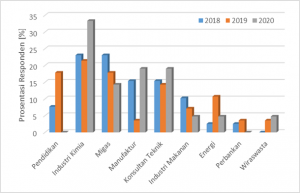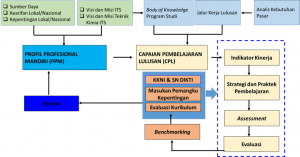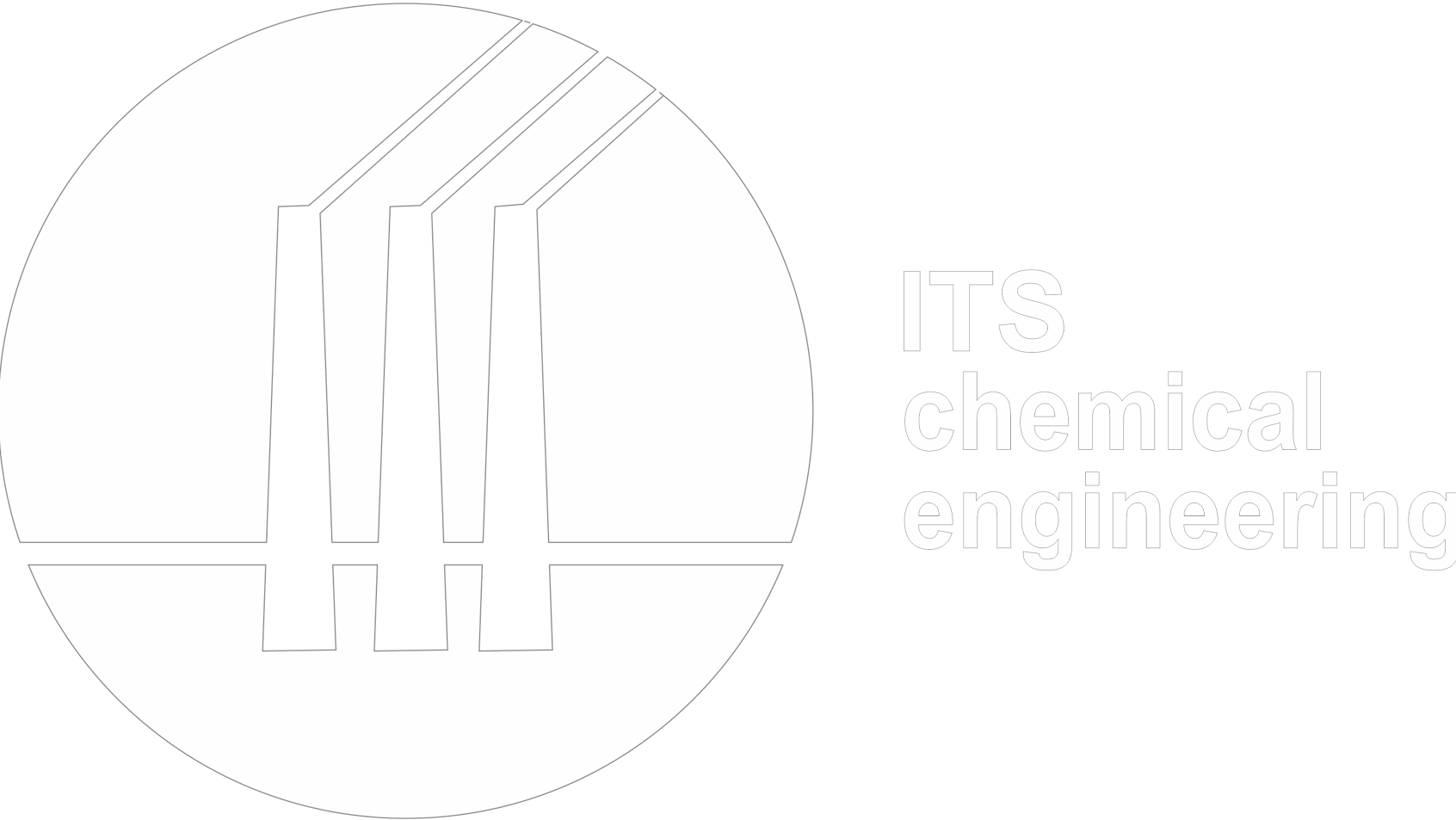Opportunities are available for chemical engineers in public as well as in private sectors. ITS Chemical Engineering Department has unique characteristic in providing training/education of engineering principles to design and operate a chemical plant in which raw materials are transformed, through physical-chemical-biological process, into higher commercial products, encompassing social and environmental benefits.
The character is reflected in the department’s aims to train professional engineers, having skill of:
- Developing chemical engineering knowledge to design and analyze chemical plants with all their problems and challenges
- Adapting to technological development in national and international atmospheres.
- Developing leadership, professional ethics, and high personal integrity as professional chemical engineers.
- Solving and trouble-shooting on problems.
- Developing dynamic job cultures, working professionally as an independent person and performing excellent team works.
- Contributing to national development by utilizing natural resources to produce higher value commodities, whilst still retaining local and national wisdoms.
In regard to graduate profiles, ITS Chemical Engineering Department alumni posses multifaceted prospective professional life as process engineers, research development, quality control and assurance, health and safety engineer, educational consultants, academia, scientists/researchers and entrepreneurs or businessmen.
Professional sector that can be occupied by chemical engineer graduates are manufacturing, food, pharmaceuticals, petroleum, petrochemicals, dyes, paints, polymers, agricultural, pulp – paper and cement industries. Chemical engineers can also take their professional occupations in service sectors, such as scientific and other development foundations or companies. In addition, they can also work in electronic and IT based companies, photography and automotives. Our graduates are also found to work in financial and banking institutions, particularly in credit analysis and numerous officer development programs.
From our survey to our alumni via social media link of https://bit.ly/kuisioner_alumniDTK, it is firmly concluded that ITS Chemical Engineering graduates have wide range of professional careers, as shown in the following graph.

Figure 1. ITS Chemical Engineering professional alumni profile as compiled through surveys conducted in 2018 – 2020
A plot to design ITS Chemical Engineering Department professional profile is depicted in the following chart.

Figure 2. ITS Surabaya Chemical Engineering Department independent professional profile design plot
Curriculum in ITS Chemical Engineering (DTK – FTIRS) is currently labeled as the 2018 – 2023 curriculum. This curriculum is a revision, adaptation and refinement from our previous scheme, the 2009 – 2014 curriculum. The revision, or refinement itself has gone through intensive discussions, coordinated with ITS executive board as our supervisor, and accommodating suggestions, feedbacks and critiques from all ITS stakeholders:, especially the alumni and alumni – users, while still preserving concept of long-life learning. Based on those feedbacks, the department formed a task – force for curriculum development, which carried out its main duty to construct a revised and modified curriculum.
Study/learning outcomes of the revised curriculum have been formulated based on combination of Indonesian National Qualification Scheme: the KKNI or Kerangka Kualifikasi Nasional Indonesia -, Higher Education National Standard: Standar Nasional Pendidikan Tinggi (Peraturan Menteri Pendidikan dan kebudayaan No. 3 Tahun 2020), and graduate profile chemical engineering undergraduate program.
The curriculum and study/learning outcomes are expected to reflect professional requirement in the chemical engineering field, as well as in management sectors in accord to our stakeholders’ interests. Our curriculums, including study outcomes, put emphasis on four points as main frame aspects:
- Knowledge
- General Skill(s)
- Special Skill(s)
- Attitude
The four-points as the curriculum main frame yield 34 learning outcomes, which have been later simplified into 8 – learning outcomes without any sacrificial reductions on their principals. Our curriculum, the 2018 – 2023 version, has been developed to accommodate subject fields/topics as suggested by the Association of Indonesian Chemical Engineering Educations – Asosiasi Pendidikan Tinggi Teknik Kimia Indonesia (APTEKIM) -. In addition, the 2018 – 2023 curriculum has been developed referring to the schemes formulated by Accreditation Board for Engineering and Technology (ABET), particularly:
- ABET – Criteria 2 – Educational Program Objective: describing and explaining what is expected of the program graduates in a period of graduation years. Education program is conducted based on program constituents requirements.
- ABET – Criteria 3 – Student Outcomes: describing skills of program graduates upon study completion. This point is related to knowledge, skill and attitude developed by students during their educational years. Success indicator is measured from the graduates’ performance in their professional career.
- ABET – Criteria 4 – Continuous Improvement: describing measurement, assessment, evaluation and employing outcome to take further decisions.
Graduate competency profile from ITS Chemical Engineering learning program is presented in the following table.
